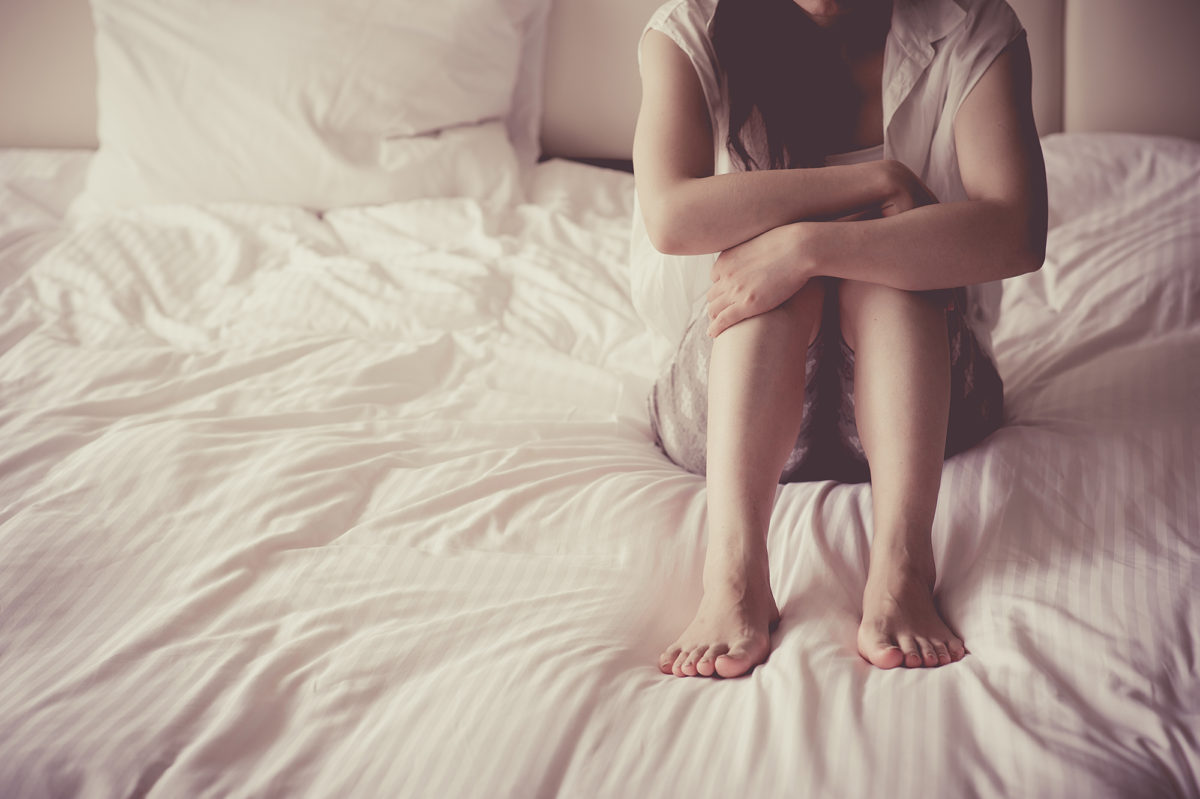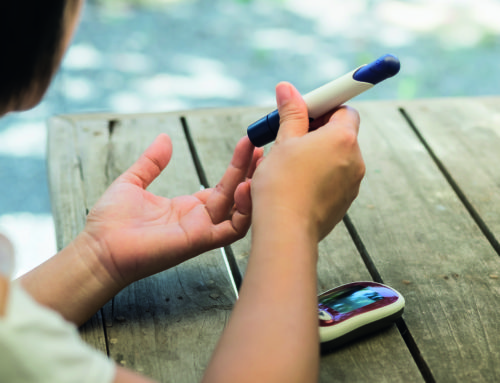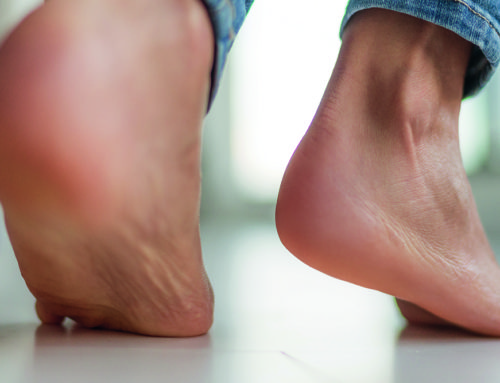Mr Roland Morley, Consultant Urologist at Imperial College Healthcare NHS Trust, presents an analysis of nocturia, focussing on its repercussions, associations, and the key elements to the provision of safe and effective treatment.
Nocturia is a complaint that the individual has to wake at night one or more times to void. In recent years, however, there has been growing recognition that it is a specific symptom in its own right, with wide-ranging pathophysiology. It also is associated with significant negative outcomes in terms of patient health and quality of life. (1)
Nocturia has historically been linked primarily to overactive bladder and benign prostatic obstruction, even though its main cause is nocturnal polyuria. Patients with nocturia are treated by healthcare providers from numerous different disciplines because nocturia is prevalent in many other conditions, such as cardiovascular disease, diabetes, and OAB. However, the specific condition of nocturia is ignored by most specialities, and only rarely does it improve with treatment of other underlying conditions.
No single treatment can effectively treat nocturia. However, desmopressin is the only evidence-based pharmaceutical therapy for nocturia, but despite this the breadth of use in clinical practice is limited (2, 3) and patients with nocturia have to face delays in diagnosis before being diagnosed properly and treated with desmopressin, instead of other medication. (2) Reasons for this include the limited knowledge of clinicians regarding the drug and how to use it, and anxiety about safety, regardless of the evidence that with the available low-dose formulations, hyponatremia is extremely rare, even in older patients. (4, 5)
What Tests Are Required?
Three-day bladder diaries, including sleep and wake-up time, as well as the next morning’s first void, have been recommended as giving the optimal balance between compliance and reliability. (6)
The maximum voided volume, void frequency, and the ratio of nocturnal to 24-hour urine production are the most used diary parameters to study and assess nocturia. (7) A maximum voided volume of 350 mL is generally considered as reduced without real evidence to support this criterion. Causes of reduced voided volumes include an OAB and residual urine (secondary to obstruction or detrusor underactivity). A residual urine measurement is, therefore, part of the initial assessment of nocturia. When reduced voided volumes are seen, imaging, urodynamics, and occasionally cystoscopy are performed, as appropriate.
Excessive nocturnal or 24-hour urine output is diagnosed using a bladder diary. Nocturnal polyuria is diagnosed if more than one-third (>33 per cent) of the 24-hour urine volume is produced during the night in patients over 65 years, and after excluding patients with 24-hour polyuria (>40 mL/kg/d). This has a high sensitivity but low specificity.
Renal causes of polyuria include diseases such as nephrogenic diabetes insipidus and loss of different circadian rhythms of the kidney, for example, through ageing of the kidney. (8, 9) Nephrogenic diabetes insipidus can also be caused by some medications, including lithium. Renal failure can also lead to leg oedema with nocturnal polyuria as a consequence.
When (nocturnal) polyuria is found, it is possible to diagnose the cause of the excess in urine output using renal function profiles. (8) These renal function profiles help in distinguishing whether the excess in urine production is due to an increase in free water clearance (vasopressin-related), osmotic diuresis (mainly salt, but can be urea (protein), glucose (diabetes), calcium (hypercalciuria), or lithium), or a combination. However, renal function profiles are only advised after the failure of desmopressin therapy, and for research purposes. In clinical practice, elevated free water clearance is the most frequent cause of nocturnal polyuria throughout the lifespan and increases with age. The second most frequent aetiology is an increased sodium clearance (e.g., due to excess intake, leg oedema, heart failure, hypertension, obstructive sleep apnoea and medication), and this also increases with age.
Vasopressin is the main water-regulating hormone in our body. Vasopressin deficiency and vasopressin resistance of nephrogenic (receptor) origin are the main mechanisms leading to a lack of antidiuretic response within the body. The result is 24-hour polyuria and polydipsia, known as diabetes insipidus, which is a rare condition diagnosed via a bladder diary and a low morning (fasting) serum and urine osmolality. An abnormal circadian rhythm of vasopressin is the main mechanism for nocturnal polyuria. (10, 11)
Sleep pathology, insomnia, and sleep disruption are well-known causes of nocturnal polyuria and nocturia (12, 13) and need to be diagnosed, especially as they are associated with morbidity and mortality. (14)
Both Parkinson’s disease and restless legs syndrome are associated with nocturnal polyuria and a reduced bladder capacity due to OAB and sphincter dysfunction. (15, 16)
Hypertension is associated with nocturia and nocturnal polyuria (21) and the metabolic syndrome is strongly associated with nocturia and many conditions predisposing to nocturnal polyuria. (17, 18)
Heart failure often coincides with renal failure and correlates with increased mortality. Both conditions coincide with an elevated creatinine, and demand referral before initiation of desmopressin or timed diuretic therapy. (18, 19) In right-sided heart failure, fluid retention and swelling of the abdomen, legs, and feet occur. Oedema causes nocturnal polyuria and nocturia through resorption of fluid when supine (20, 21), resulting in an immediate excess in urine output and a delayed increase in atrial natriuretic polypeptide-related salt diuresis. A high intake of water, salt, or protein results in an increased excretion by the kidney and can result in nocturnal polyurea and nocturia.
Concomitant medication is often difficult to interrupt or change but might have an important impact on nocturia through increasing or decreasing diuresis, changing bladder function, or through interfering with sleep.
Calcium channel blockers increase salt excretion to lower blood pressure, but side-effects include leg oedema, which can potentially worsen nocturia when the oedema fluid is resorbed during the night.
Medications that typically increase diuresis are diuretics, all antihypertensive medication, progesterone, melatonin, lithium, and SECT-2-inhibitors (antidiabetic patients). Medications that typically cause leg oedema are antidepressants (monoamine oxidase inhibitors, trazodone), antihypertensives (beta-blockers, clonidine, hydralazine, methyldopa, minoxidil and so on), antivirals (acyclovir), hormones (sex hormones), NSAIDs (celecoxib, ibuprofen), and some chemotherapeutics and cytokines.
Treatment
The following conditions are a contraindication for desmopressin:
• Congestive heart failure
• Polydipsia
• Concomitant medication with a high-risk of hyponatremia
Desmopressin for nocturia is contraindicated in patients with mild (class II) to severe (class IV) congestive heart failure or uncontrolled hypertension, and there is ample evidence that treating heart conditions, increasing physical activity, salt restriction, losing weight, and preventing oedema treats nocturia. (2) In people with moderate cardiac failure, this condition should be treated before any attempt to address nocturia.
High-risk medications for hyponatremia are thiazide diuretics, lithium, valproate, and carbamazepine (23) and use of these should be considered as a contraindication for desmopressin therapy. Low-to-moderate risk medications for hyponatremia are loop diuretics, antidepressants, ACE-inhibitors, and angiotensin-II-receptor blockers. These can be used concomitantly with desmopressin after consideration of the other factors and comorbidities.
There is ample evidence that treating heart conditions, increasing physical activity, salt restriction, losing weight, and preventing oedema treats nocturia. (6)
Lifestyle interventions aim to prevent rather than treat renal disorders. Salt, protein, and caloric restriction are advised in patients with renal failure but there is no evidence of its effect on nocturia.
Desmopressin can have some effect in partial nephrogenic diabetes insipidus but is not the primary choice in patients with severe renal failure as the risk of hyponatremia is much higher. In patients with low-to-moderate renal failure, as is seen in the older population, a loss of circadian rhythms in diuresis is found and these patients are potentially good candidates for desmopressin therapy.
Limiting excess fluid intake and changing the type of fluid is advised and from a theoretical point of view, a protein-rich and fat / carbohydrate-restricted diet might increase urine output as well as reduce it in the longer-term via weight loss. A well-balanced calorie-restricted diet is the most logical approach to avoid high excretion of urea and salt in patients with nocturia.
Patients with nocturnal polyurea due to a blunted increase in atrial polypeptide secretion at night, leading to an increase in free water clearance, are good candidates for desmopressin therapy. (23)
Patients with 24-hour polyuria due to central diabetes insipidus (in which production of the hormone is compromised) are also effectively treated with desmopressin. (24)
In older people with nocturnal polyurea and nocturia, the underlying condition should be treated first including bladder outflow obstruction in men and the overactive bladder with / without detrusor activity.
Initiating Desmopressin Treatment
Nocturnal polyuria due to reduced nocturnal vasopressin is the primary target for desmopressin. Salt-related nocturnal polyuria is associated with other causes such as sleep apnoea (the primary target for CPAP), oedema, obesity, hypertension, heart failure, and high salt intake. There is level 1a evidence that desmopressin and CPAP treat nocturia. (3)
Women are more prone to hyponatremia.
With earlier formulations of desmopressin (0.2 mg tablets), hyponatremia was seen mainly in older populations, leading to a restriction in use to those below 65 years of age. Low-dose therapy to provide an antidiuretic effect of six-to-eight hours is beneficial to treat the older (especially female) population. Low-dose therapy is advisable in older (but not frail) patients and serum sodium monitoring is needed; such monitoring can be individualised depending on patient-specific factors (e.g., age, concomitant medication) and comorbidities. Frail older patients with bothersome nocturia and comorbidities or other risk factors should first be treated for other issues and comorbidities and then, if still required, desmopressin should be initiated with careful monitoring.
Young, healthy patients can be treated with any licensed desmopressin formulation.
Follow-up of Desmopressin Therapy
There are various approaches to sodium monitoring in the literature. Before starting therapy, baseline sodium levels must be obtained in patients at risk for hyponatremia.
There is some evidence that a sodium monitoring plan should begin with a baseline sodium ≥135 mmol/L with additional testing at week one and month one after initiation of desmopressin in patients who are at increased risk (e.g., due to older age, or concomitant medications). Beyond one year, there is no consensus on follow-up required.
If the response to desmopressin is insufficient at a low-dose, there is consensus that the dose should be up-titrated depending upon the frailty of the patient. If the dose is up-titrated and further sodium checks are appropriate, these should be carried out within seven days. (Table One)
If hyponatremia is found after initiating desmopressin therapy, treatment should be discontinued when a serum sodium concentration is below 130 regardless of the presence of symptoms. If a sodium check is between 130 and 135 and the patient is asymptomatic, treatment need not be discontinued but further checks or drug-free intervals or lowering the dose should be performed.
The monitoring of serum sodium in nocturia patients treated with desmopressin lacks sufficient evidence to produce good guidelines. As hyponatremia is rare in well-selected patients with the currently available low-dose formulations, producing strong evidence for a safety protocol will be difficult.
Conclusion
Desmopressin is a safe and effective treatment for nocturia and nocturnal polyurea with a safe side-effect profile
About the Author
Roland is a Consultant Urologist at Imperial College Healthcare NHS Trust.
He is a member of the British Association of Urological Surgeons, a member of the International Continence Society, and Chair of the United Kingdom Continence Society. Roland is also a member of the British Association of Paediatric Urologists and has recently completed terms as President of the Urology Section of the Royal Society of Medicine, Chairman of the Specialist Advisory Committee for Urology, and Chairman of the British Association of Urological Surgeons’ Section of Female Urology and Reconstruction.
Roland was previously Divisional Director of Surgery and Critical Care at the Kingston Hospital NHS Trust and Director of Medical Education.
His special areas of interest are female urology, paediatric urology and benign reconstruction of the genitourinary tract. Greater than 75 per cent of Roland’s practice is now devoted to these aspects.
References
1. Bosch JLHR, Weiss JP. The prevalence and causes of nocturia. J Urol. 2013; 189( 1 Suppl): S86- S92.
2. Oelke M, Anderson P, Wood R, Holm-Larsen T. Nocturia is often inadequately assessed, diagnosed and treated by physicians: results of an observational, real-life practice database containing 8659 European and US-American patients. Int J Clin Pract. 2016; 70( 11): 940- 949.
3. Sakalis VI, Karavitakis M, Bedretdinova D, et al. Medical treatment of nocturia in men with lower urinary tract symptoms: systematic review by the European Association of Urology Guidelines Panel for male lower urinary tract symptoms. Eur Urol. 2017; 72( 5): 757- 769.
4. Callréus T. Use of desmopressin in elderly patients in Denmark. Pharmacoepidemiol Drug Saf. 2007; 16( 9): 995- 998.
5. Juul KV, Malmberg A, van der Meulen E, Walle JV, Nørgaard JP. Low-dose desmopressin combined with serum sodium monitoring can prevent clinically significant hyponatraemia in patients treated for nocturia. BJU Int. 2017; 119( 5): 776- 784.
6. van Haarst EP, Bosch JLHR. The optimal duration of frequency-volume charts related to compliance and reliability. Neurourol Urodyn. 2014; 33( 3): 296- 301.
7. Oelke M, De Wachter S, Drake MJ, et al. A practical approach to the management of nocturia. Int J Clin Pract. 2017; 71( 11): e13027.
8. Goessaert AS, Krott L, Hoebeke P, Vande Walle J, Everaert K. Diagnosing the pathophysiologic mechanisms of nocturnal polyuria. Eur Urol. 2015; 67( 2): 283- 288.
9. Denys MA, Decalf V, Kumps C, Petrovic M, Goessaert AS, Everaert K. Pathophysiology of nocturnal lower urinary tract symptoms in older patients with urinary incontinence. Int J Urol. 2017; 24( 11): 808- 815.
10. Nørgaard JP, Hashim H, Malmberg L, Robinson D. Antidiuresis therapy: mechanism of action and clinical implications. Neurourol Urodyn. 2007; 26( 7): 1008- 1013.
11. Natsume O. A clinical investigation of nocturnal polyuria in patients with nocturia: a diurnal variation in arginine vasopressin secretion and its relevance to mean blood pressure. J Urol. 2006; 176( 2): 660- 664.
12. Kamperis K, Hagstroem S, Radvanska E, Rittig S, Djurhuus JC. Excess diuresis and natriuresis during acute sleep deprivation in healthy adults. Am J Physiol Renal Physiol. 2010; 299( 2): F404- F411.
13. Fantus RJ, Packiam VT, Wang CH, Erickson BA, Helfand BT. The relationship between sleep disorders and lower urinary tract symptoms: results from the NHANES. J Urol. 2018; 200: 161- 166.
14. Liu F, Zhang H, Liu Y, et al. Sleep Duration interacts with lifestyle risk factors and health status to alter risk of all-cause mortality: the rural Chinese cohort study. J Clin Sleep Med. 2018; 14( 5): 857- 865.
15. Batla A, Phé V, De Min L, Panicker JN. Nocturia in Parkinson’s disease: why does it occur and how to manage?. Mov Disord Clin Pract. 2016; 3( 5): 443- 451.
16. Suchowersky O, Furtado S, Rohs G. Beneficial effect of intranasal desmopressin for nocturnal polyuria in Parkinson’s disease. Mov Disord. 1995; 10( 3): 337- 340.
17. Aoki Y, Yokoyama O. Metabolic syndrome and nocturia. Low Urin Tract Symptoms. 2012; 4( s1): 11- 15.
18. Denys MA, Anding R, Tubaro A, Abrams P, Everaert K. Lower urinary tract symptoms and metabolic disorders: ICI-RS 2014. Neurourol Urodyn. 2016; 35( 2): 278- 282.
19. Shamseddin MK, Parfrey PS. Mechanisms of the cardiorenal syndromes. Nat Rev Nephrol. 2009; 5( 11): 641- 649.
20. Hirayama A, Torimoto K, Yamada A, et al. Relationship between nocturnal urine volume, leg edema, and urinary antidiuretic hormone in older men. Urology. 2011; 77( 6): 1426- 1431.
21. Torimoto K, Hirayama A, Samma S, Yoshida K, Fujimoto K, Hirao Y. The relationship between nocturnal polyuria and the distribution of body fluid: assessment by bioelectric impedance analysis. J Urol. 2009; 181( 1): 219- 224.
22. Liamis G, Milionis H, Elisaf M. A review of drug-induced hyponatremia. Am J Kidney Dis. 2008; 52( 1): 144- 153.
23. Andersson KE. The pharmacological treatment of nocturia. BJU Int. 2002; 90( Suppl 3): 25- 27.
24. Robinson AG. DDAVP in the treatment of central diabetes insipidus. N Engl J Med. 1976; 294( 10): 507- 511.








